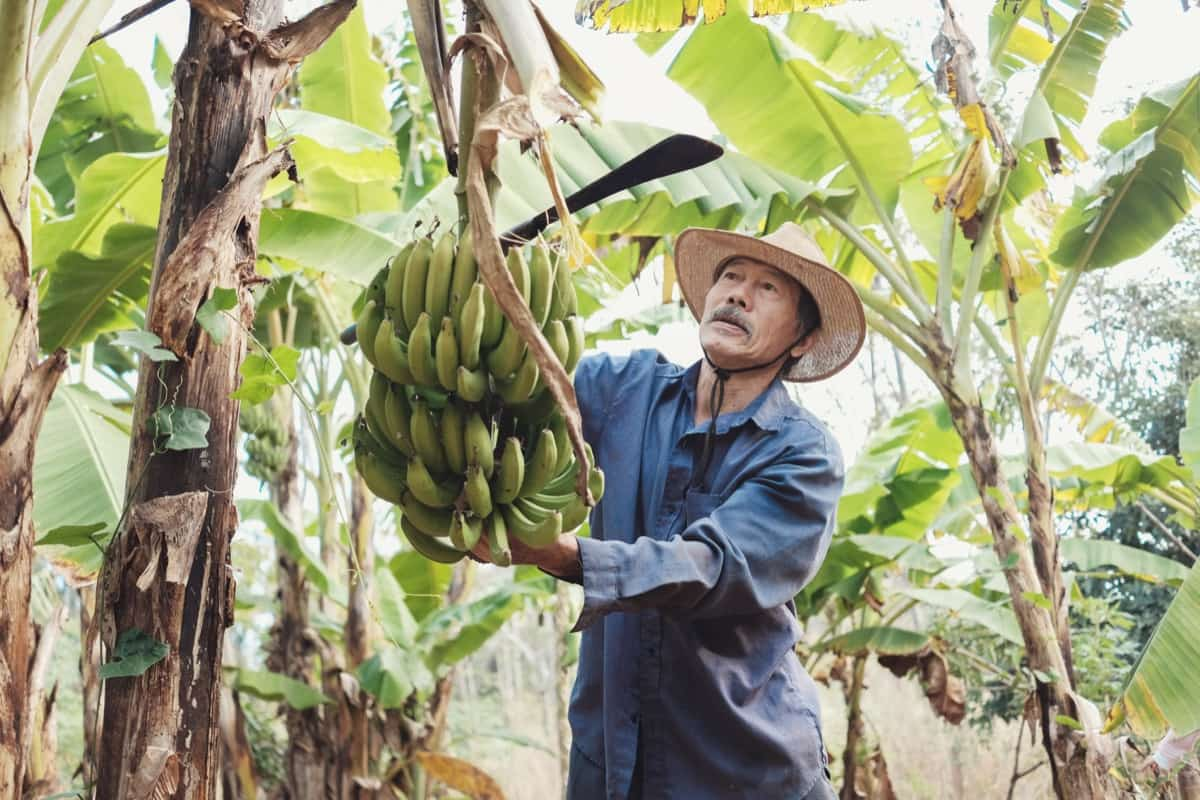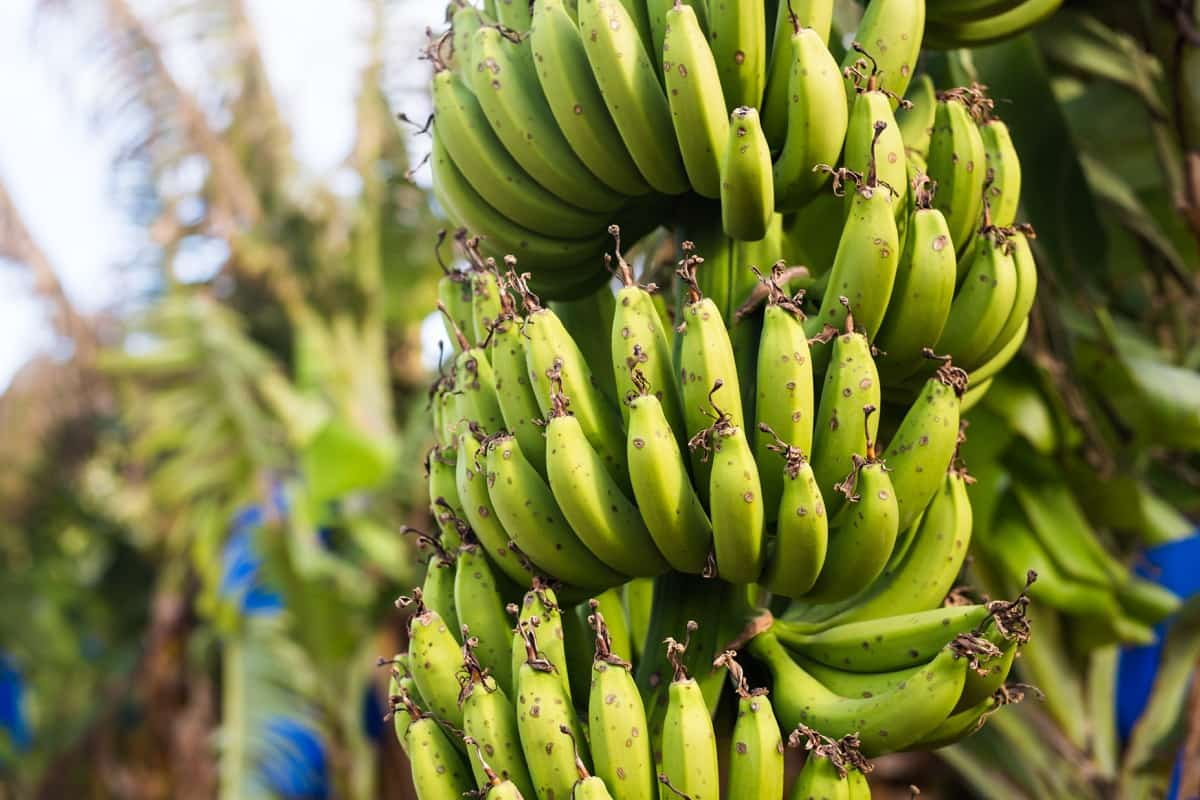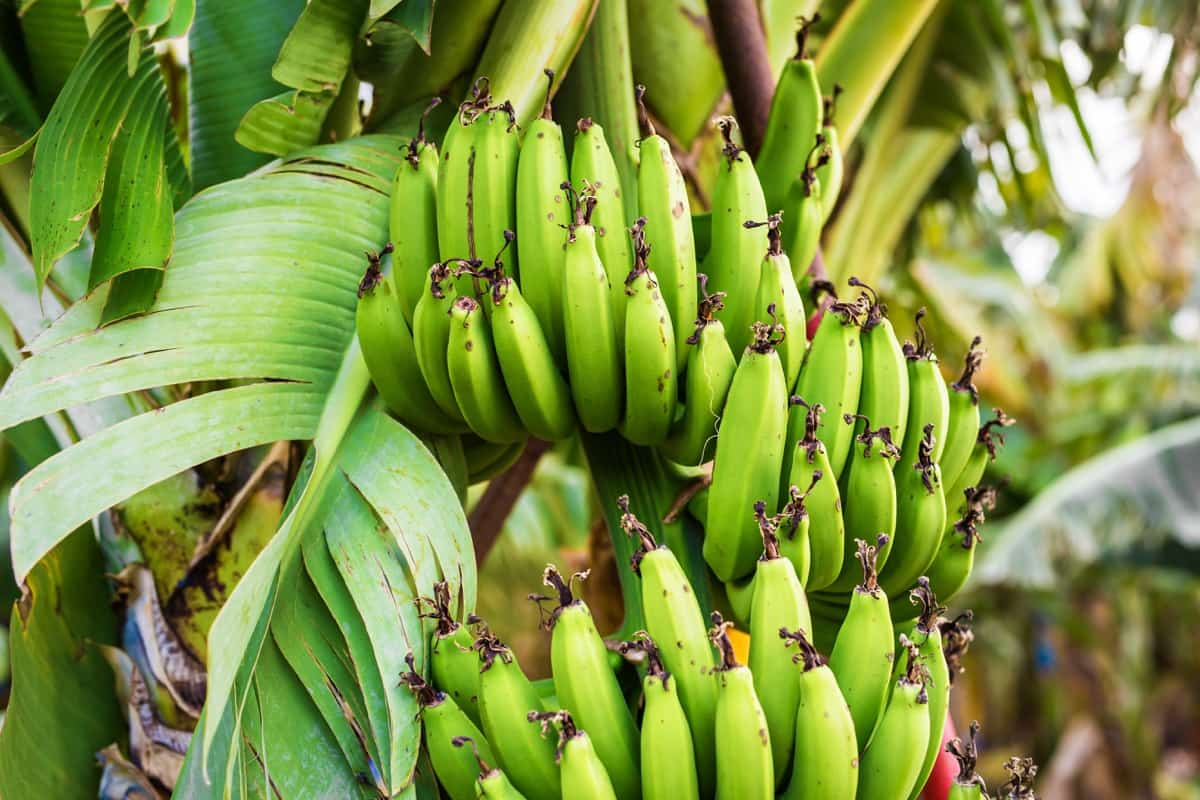Banana Kotta Vazhai is a complex physiological disorder affecting Banana crops’ productivity and profitability. Banana’s Kotta Vazhai physiological disorder affects Banana crops, causing them to produce low-quality yields. The disorder was first observed in the Kotta Vazhai region of Tamil Nadu, India, in the late 1990s and has since spread to other banana-growing regions in the country and other parts of the world.

The disorder can affect food security, as bananas are an important staple food for many communities worldwide. Kotta Vazhai is a significant concern for banana growers and exporters as it can lead to significant financial losses due to reduced crop yields and lower fruit quality. It is, therefore, crucial to understand the disorder’s underlying mechanisms and identify effective management strategies to mitigate its impact.
This article provides an overview and discussion of Kotta Vazhai, including its symptoms, causes, and management strategies, to aid in sustainable banana production, effective control, and prevention of this physiological disorder in banana crops, ensuring profitable returns from this crop.
Banana Kotta Vazhai and Finger Drop Disorders Management
Characteristics of Banana Kotta Vazhai Disorder
- The disorder is characterized by numerous inviable under-developed seed-like structures in the central core of the pointed, improperly filled fruits, making them inedible.
- The most prominent symptom is the development of brown spots on the surface of the fruit, which gradually increase in size and number, resulting in a disfigured appearance.
- The spots can appear on any part of the fruit, including the stem end, tip, and sides.
- The affected fruit areas may also exhibit discoloration, ranging from light brown to dark brown or black.
- Internal symptoms, such as the development of brown streaks in the fruit’s pulp, can make the fruit unsuitable for sale.
- The development of yellow or brown spots on the leaves can eventually lead to the premature shedding of the leaves.
- In severe cases, the affected fruit areas may crack, exposing the underlying tissue.
- Other symptoms include a reduction in fruit size and weight, a decrease in fruit quality, and a decline in overall plant health.
Causes of Banana Kotta Vazhai Disorder Development
- This disorder is believed to be caused by environmental stress, high temperature and humidity, and certain agricultural practices, such as excessive amounts of nitrogen fertilizers.
- High temperature and humidity levels can stress the banana plants, and excessive exposure to sunlight can also contribute to the development of the disorder.
- Using imbalanced or excessive fertilizers, particularly nitrogen fertilizers, can alter the soil pH and nutrient balance.
- Improper water management, such as over- or under-irrigation, can affect the uptake of nutrients by banana plants.
- The application of herbicides or pesticides can also cause this disorder.
- Improper post-harvest handling also develops this disorder.
Favorable Conditions of Banana Kotta Vazhai Disorder
- Prolonged exposure to temperatures above 30 °C and humidity above 80% can stress the banana plants.
- Inadequate soil moisture levels can increase the likelihood of the disorder.
- Storage at incorrect temperatures, or exposure to ethylene gas, can exacerbate the symptoms.
- Pesticides can harm beneficial insects and microorganisms that help maintain soil health, leading to imbalanced soil nutrient levels contributing to the disorder.
- Banana plants exposed to stress, such as pest infestations, drought, or extreme temperatures, are more likely to develop this disorder.
Management Measures of Banana Kotta Vazhai Disorder
- Use more sustainable agricultural practices, such as applying balanced fertilizers and shade nets to reduce heat stress, as well as the development of resistant banana varieties.
- Regular soil testing and maintenance of the appropriate soil pH and nutrient levels can help prevent imbalanced soil nutrient levels.
- Avoid waterlogging and carefully manage soil moisture levels for healthy plant growth.
- Spray 2,4-D after opening the last hand of the bunch to control this disorder.
- Avoid excessive nitrogen fertilization.
- Use banana cultivars that are less susceptible to this disorder.
- Use integrated pest management practices that minimize the use of pesticides.
In case you missed it: Banana Black Spot or Freckle Disease Management: Symptoms, Treatment, Chemical, Biological, and Organic Control

Banana Finger Drop Physiological Disorder
Banana Finger Drop physiological disorder is a common disorder that affects banana crops worldwide. Banana Finger Drop physiological disorder can significantly affect the quality of the banana fruits. This disorder can cause significant yield losses and economic damage to growers, reducing the quality and market value of the affected fruit. Various factors can contribute to the development of this disorder, including environmental conditions, cultural practices, and pest and disease infestations.
Effective management strategies for banana finger drop disorder are essential to minimize the economic impact on growers and maintain the productivity and quality of banana crops. This article provides an overview of Banana Finger Drop Disorder, including its symptoms, causes, and management strategies, to aid in the development of effective control measures and improve Banana production.
Characteristics of Banana Finger Drop Disorder
- The symptoms of banana finger drop disorder can occur at any stage of fruit development, from the formation of the hand to the maturation of the fruit.
- It is characterized by premature detachment or drop of the fruit fingers from the bunch before maturity due to the weakening of the pedicel.
- The detached fruit fingers often remain underdeveloped and undersized and reduce yields.
- The remaining fruit fingers on the bunch may ripen unevenly, with some fingers maturing earlier than others.
- The fruit may develop a rough texture, irregular shape, and thicker skin, which can reduce the quality and market value of the fruit.
- The yellowing of leaves may indicate stress on the plant.
Causes of Banana Finger Drop Disorder Development
- High temperatures and low humidity can increase water loss from the plant and fruit, leading to premature fruit drop.
- Potassium deficiency is a common problem in banana crops and can result in reduced fruit quality and increased fruit drop.
- Over-pruning or under-pruning can result in imbalanced fruit loads and increased fruit drop.
- Over-irrigation or under-irrigation can lead to water stress, which can cause premature fruit drop.
- Insect infestations, such as banana weevils or nematodes, can cause damage to the plant and fruit, leading to premature fruit drop.
- Fungal diseases such as anthracnose or black Sigatoka can weaken the plant and cause fruit drop.
Favorable Conditions of Banana Finger Drop Disorder
- Environmental factors such as temperature, humidity, and water availability can affect the development of banana finger drop disorder.
- Banana plants exposed to high temperatures for extended periods are more susceptible.
- Low humidity levels can increase the rate of water loss from plants and fruits.
- Prolonged periods of water stress due to inadequate irrigation, soil moisture deficit, or periods of drought can weaken the plant and result in premature fruit drop.
- Nutritional deficiencies or imbalances can also contribute to the development of banana finger drop disorder.
- Cultural practices such as pruning, fertilization, and irrigation can also influence the development of banana finger drop disorder.
- Some banana cultivars may be more susceptible to finger drop disorder than others due to genetic factors.
In case you missed it: Banana Infectious Chlorosis Disease Management: Symptoms, Treatment, Chemical, Biological, and Organic Control

Management Measures of Banana Finger Drop Disorder
- Cultural practices like proper pruning techniques, balanced fertilization, and appropriate irrigation can help reduce the incidence of finger drop disorder.
- Maintain soil fertility by applying potassium fertilizers to the soil.
- Use resistant cultivars and biological control agents to control this disorder.
- Harvest the fruits at the appropriate maturity stage.
- Implementing appropriate irrigation and shading techniques can help regulate temperature and humidity.
- Maintaining appropriate soil moisture levels can help prevent water stress.
- Deworming Schedule for Dogs/Puppies: A Beginners Guide
- How to Prevent and Control Parasites in Goats
- Beneficial Insects in Pest Management
- Natural Solutions for Pest Control in Flower Gardens
- Types of Fungicides Used in Agriculture
- Common Issues in the Fruit Development Stage of Pomegranate Farming
- Fruit Development Issues in Papaya: Easy Solutions and Treatment
- Soil-Borne Diseases and How to Protect Your Plants
- Practices to Prevent Disease Spread in the Garden